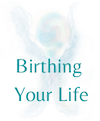In Part 1 of this post, we looked at how our trauma may echo throughout our lives, affecting how we meet stressful or threatening conditions arising later in life. A common effect of unresolved trauma is to harden ourselves against feeling pain again. This can lessen our compassion for suffering others, perpetuating a cycle of trauma through traumatizing actions.
This tendency to dismiss obvious pain and suffering has been rampant in the field of obstetrics. Babies have been routinely treated with speed that is overwhelming for their sensitive, immature nervous systems. Just last month, the World Health Organization released a document with 56 recommendations, including allowing birth to be a slow as it needs to be, without interventions. (http://apps.who.int/iris/bitstream/10665/260178/1/9789241550215-eng.pdf?ua=1)
The sense of urgent need to get the baby out may or may not relate to accurate perception of the current situation. Often, not intervening could be much less traumatizing and result in a more successful, satisfying birth experience for mother, baby and family. Interestingly, in the USA, which has a very high rate of medical interventions at birth, the infant mortality rate is higher than many other countries. When mothers and babies are given the support they need to listen to and trust their process, most often they can find their way.
It is important to acknowledge that some interventions save lives. We can be grateful for those. The way they are administered, however, is often as traumatizing as the intervention itself. Birth practitioners coming from a fear-based motivation – fear of death, fear of loss of control, fear of being sued, fear of missing their golf game (sorry, I needed to include that one) – all of these can propel the birth team into frantic, often unnecessary, action. In the commotion, the sensitive state of birthing mother and her baby may be missed.
Often, the fear comes not from the current situation but from the birth practitioner’s own history. As Frederick Leboyer wrote in his book, Birth Without Violence, “The easiest, the most sensible, the most obvious thing for the onlooker to do – would be simply to breathe.” He describes in beautiful poetic language how birth practitioners tend to be acting out their own history. This is how trauma can be passed on from one generation to another if we do not meet it in a healing way. Parents also tend to act out (or in opposition to) their own history.
Where is the relationship and the safety when we are just doing what is etched in our defensive nervous systems to do? Stephen Porges, whose polyvagal theory has been changing the face of therapy, points out that we need to have our social engagement nervous system online to feel safe and to accurately detect safety. Otherwise, we can only act from sympathetic fight-flight or parasympathetic freeze states when faced with potentially threatening or overly stressful situations. From these defensive states, we tend to perceive danger, unable to accurately assess the current situation in current time. In this way, those at a birth may be perceiving and acting as if the stress or dangers of their own birth were happening again.




